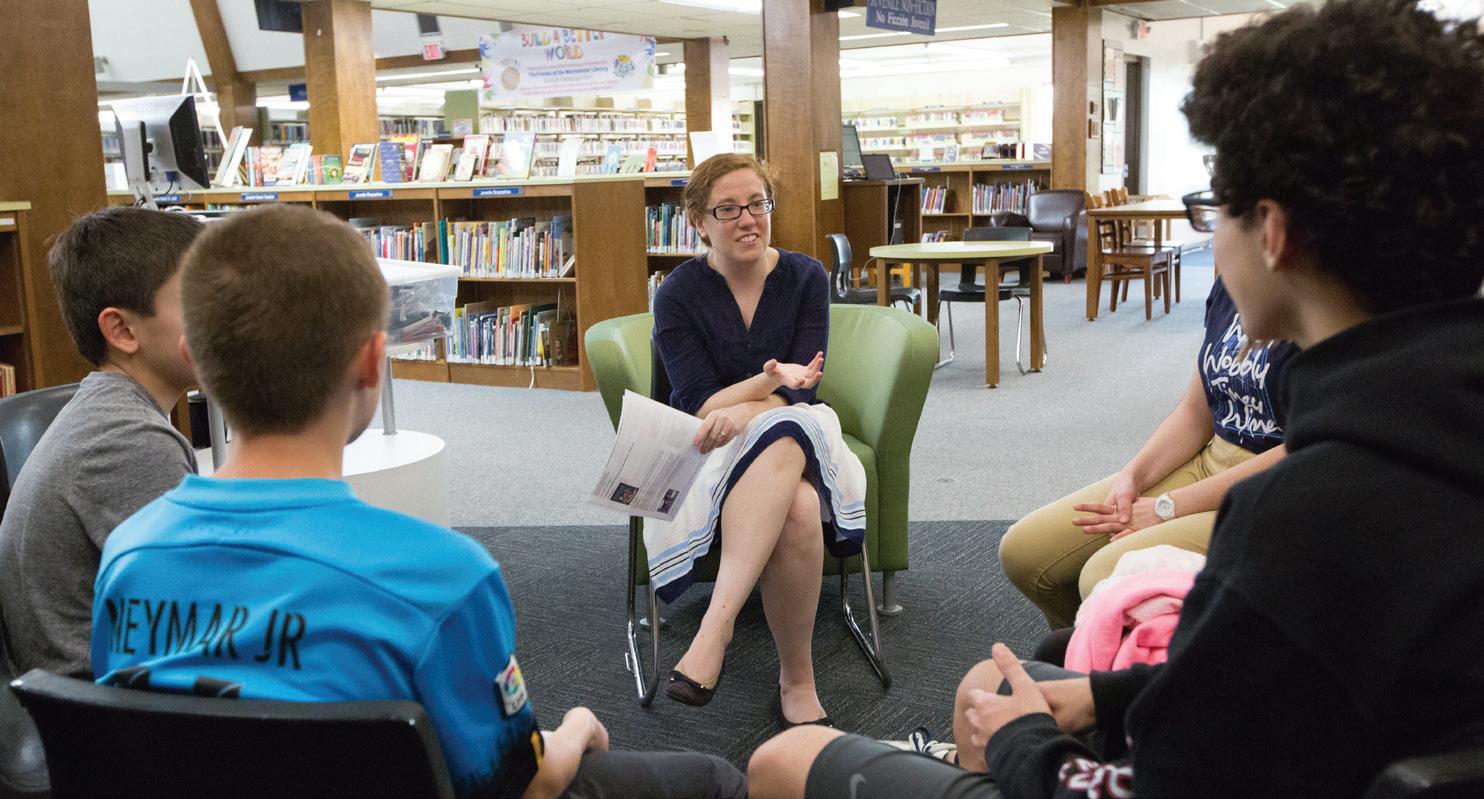
4 minute read
Elements of Effective Youth Programming
Research helped PA Humanities focus on the elements of effective youth programming that were specifically important to our organization and the Teen Reading Lounge program. We strive to highlight these elements, all of which support positive youth development, in the training and support we offer site staff.
Youth Directed
A notable drop in participation in out-of-school time programs occurs when youth transition from middle school to high school. Programs for elementary and middle school students are, by design, often adult directed, but studies suggest adultdriven programming with minimal insight from youth is not attractive to adolescents.26 Adolescents are in the process of transitioning to adulthood, and they are interested in trying out adult-type responsibility and decision making. Teens are interested in attending programs that provide opportunity to make meaningful contributions and where their interests and voice are recognized. Programs designed collaboratively between adults and teens are likely to have better retention and outcomes for young people. TRL is designed to be a developmentally appropriate program that integrates the humanities through reading, discussion, and action. PA Humanities uses Hart’s Ladder of Youth Participation as a guide to increase site coordinators’ and facilitators’ confidence and skills for facilitating a youth-led program.
Hart’s Ladder of Youth Participation is an eight-rung ladder that defines youth involvement in programming strategies. It clarifies the levels of engagement, beginning with nonparticipation and culminating in the highest forms of engagement, such as co-development and partnership. Engagement ranges from rung one, manipulation, to rung eight, shared decision making between youth and adults. Empowerment and co-development are the primary goals of meaningful engagement.27 Many youth programs are at rung one or two, manipulation or tokenism. Higher rungs are more attractive to young people. The current model of TRL is designed to be a youth-driven program, with a goal of all programs reaching rungs 6 to 8. Asset-Based
Asset-based programming assumes all young people have traits, strengths, and life experiences that should be brought to bear. Asset-based programming draws on pre-existing assets, seeking to increase the number of assets a young person has and to build strengths that serve as resources for navigating development and increasing positive life outcomes. Assets are a combination of strengths and environmental resources that are related to developmental processes, experiences, and relationships. Teen Reading Lounge recognizes that youth who participate in the program have had different life experiences that result in youth developing varied strengths. For example, some youth may be charismatic public speakers and others may be great planners. Because we are youth-driven, program staff work to identify the strengths of TRL participants and to integrate opportunities for all young people to contribute to the program, acknowledging their skills and strengths as assets.
Inclusive and Culturally Relevant
Culturally relevant teaching holds high expectations for all learners, assists learners with the development of cultural competence, and guides students to develop a critical cultural consciousness. Programs that use culturally relevant teaching strategies, such as inclusive curriculum, and provide professional development to increase staff competencies are essential for recruitment and retention. Culturally relevant teaching is youth centered and integrates youths’ background knowledge and prior home and community experiences into the curriculum.28 The current model of TRL has been designed to be developmentally appropriate and be culturally inclusive to foster character and the healthy development of teens as they transition into adults.29 In our work with TRL we have labored to develop a framework to structure an inclusive environment for all youth through our program development guide and through the professional development and coaching that we provide to program coordinators and facilitators. Sites are encouraged to identify facilitators who are from the communities being served.


Roger Hart’s Ladder of Participation
Rung 8 – Youth-initiated shared decisions with adults: Youth-led activities, in which decision making is shared between youth and adults working as equal partners.
Rung 7 – Youth-initiated and direct: Youth-led activities with little input from adults.
Rung 6 – Adult-initiated shared decisions with youth: Adult-led activities, in which decision making is shared with youth.
Rung 5 – Consulted and informed: Adult-led activities, in which youth are consulted and informed about how their input will be used and the outcomes of adult decisions.
Rung 4 – Assigned, but informed: Adult-led activities, in which youth understand purpose, decision-making process, and have a role.
Rung 3 – Tokensim: Adult-led activites, in which youth may be consulted with minimal opportunities for feedback.
Rung 2 – Decoration: Adult-led activites, in which youth understand purpose, but have no input in how they are planned.
Rung 1 – Manipulation: Adult-led activities, in which youth do as directed without understanding of the purpose for the activities.








